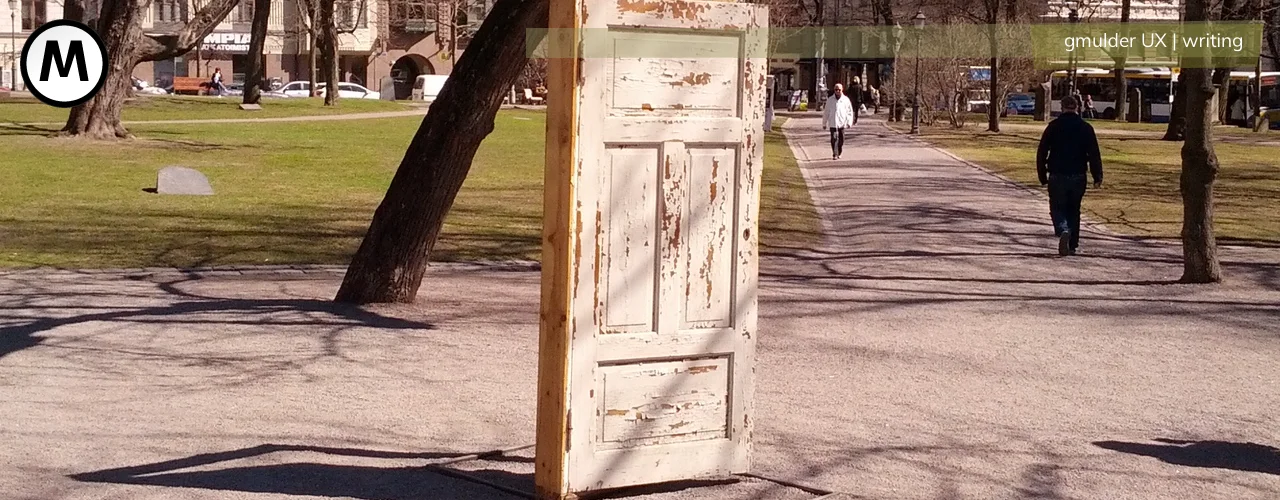DIGITALIZATION, SUSTAINABILITY AND UX

Sustainability and digitization are two companions that are increasingly being mentioned in the same breath lately. It’s no wonder, really, because when it comes to social megatrends, the two are pretty much in the same boat. On the one hand, of course, because the shift toward a sustainable economy and society is a very fundamental necessity that thus influences every other field – including digitization. On the other hand, because digitization has a potentially central role to play in the necessary transformation.
Intensive work is already being done on this area of tension between sustainability and digitization. One example is the work of the Wuppertal Institute on a transformation roadmap for digitization and sustainability: using digitization for the socio-ecological transformation.
What can UX contribute to this? In terms of sustainability transformation, I think the same applies to UX as to digitalization: in my view, there are 2+1 perspectives from which we should take a look at our work:
- How can UX support sustainable development?
That seems to be the more obvious question. It posits UX as a force for good. Let’s think of the traffic turnaround, for example. UX is very directly called upon there to make the use of alternative forms of mobility as easy as possible. For example, making driving and paying/ticketing for public transportation a seamless experience or process so that the necessary secondary use case (I have to buy a ticket) doesn’t become an obstacle to the primary use case (I want to get to my destination by public transportation). And that’s really just the simplest example. - How can UX itself become sustainable?
User experience has its own responsibility. Even if the boundaries to the tasks of development and operations are blurred here, UX can always ask itself the following question;- Is what we are designing inclusive? For example, is it Accessible, or does it exclude user groups?
- Is what we design conserving resources? Can we influence somewhere that less or renewable energy is used? Does what we design also work on old devices, or do we instead increase the pressure through our design to renew devices that otherwise still do their job without further ado – and thus help to waste resources??
- Is what we design ethically sustainable? Here, for example, we are talking about such obvious things as dark patterns or the problematic but systemically built-in monopolization of, for example, messengers, which could perhaps be broken through a duty of interoparability.
- How can a UX person act in a sustainable way?
So beyond the usual decisions that you can make as a citizen and consumer so generally…. Collaborate, participate in the discussion. This is possible in associations, parties and at conferences. Since dates and current events change constantly, only one contact point is emphasized here, which remains constantly interesting: the association D64, in which I am also a member. Here is also the link to a current article on the topic (German only): Aus Corona lernen: Digitale Nachhaltigkeit muss zentrales Anliegen der Politik werden.
The door of this wardrobe is just one special way into the field of digitalization, sustainability and UX. The field is a wide one and is waiting to be explored.
Ein paar weitere Links zum Thema
- #SustainableDigitalAge – Illustriertes Fact Sheet des WBGU
- branch – A Sustainable Internet for All Magazine
- nachhaltige Digitalisierung (Institut für ökologische Wirtschaftsforschung GmbH)
Nachhaltige Entwicklung?
Das ist ein weites Feld. Die UN hat dazu 17 Ziele für eine nachhaltige Entwicklung aufgestellt. Das bunte Mosaik dieser Ziele verdeutlicht, das es hier keine einfachen Antworten gibt, sondern komplexe Zusammenhänge zu betrachten sind. Die Ziele umfassen dabei offensichtliche, ökonomische wie die Beseitigung des Hungers und der Armut auch nicht allein ökonomische wie eine gute und gleiche Ausbildung, Gleichberechtigung der Geschlechter sowie die Förderung friedlicher und integrativer Gesellschaften.

